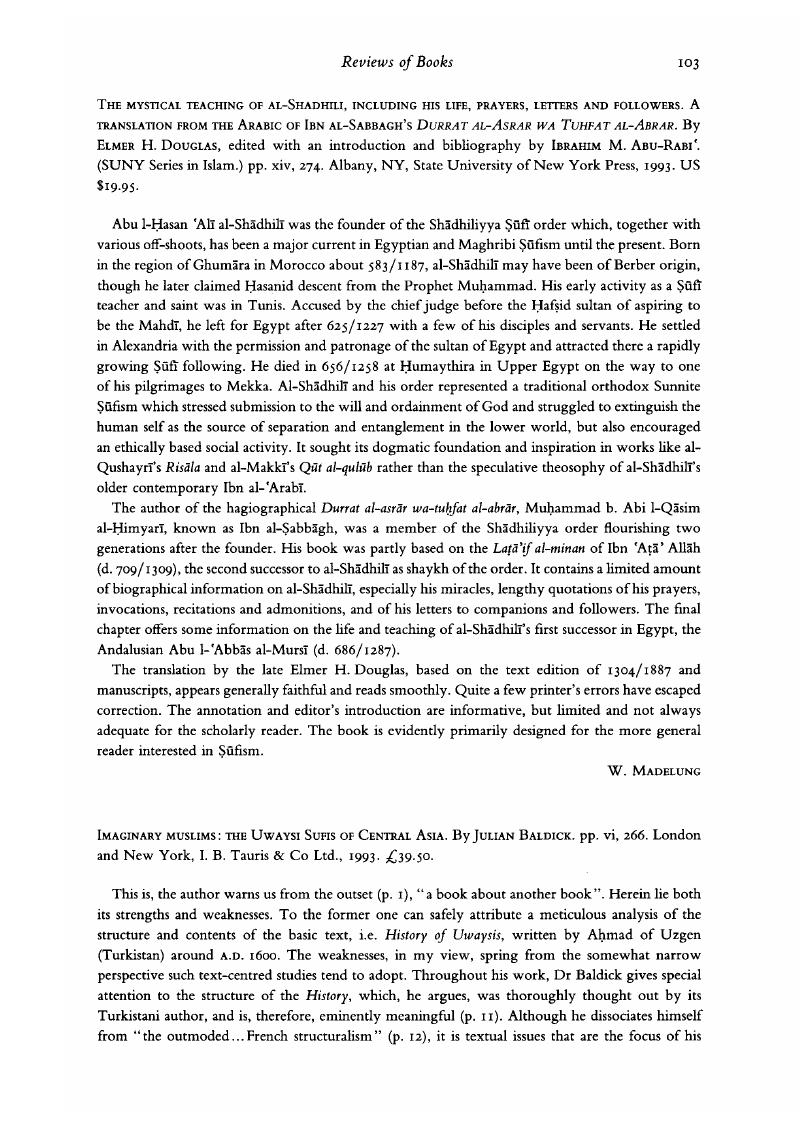No CrossRef data available.
Article contents
Imaginary muslims: the Uwaysi Sufis of Central Asia. By Julian Baldick. pp. vi, 266. London and New York, I. B. Tauris & Co Ltd., 1993. £39.50.
Published online by Cambridge University Press: 24 September 2009
Abstract

- Type
- Book Review
- Information
- Copyright
- Copyright © The Royal Asiatic Society 1995
References
1 Regrettably, Dr Baldick has not made use of the vast literature on the subject by Soviet historians and anthropologists of Central Asia. One primarily thinks of such works as Snesaryev's, G. Relikti domusul’ manskikh verovanii u uzbekov Khorezma, (Moscow, 1969)Google Scholar and Khorezmskiye legendi kak istochnik po istorii religioznykh kul’ tov Srednei Azii, (Moscow, 1983).Google Scholar Mention might also be made of the numerous articles and essays by Semenov, A. A. as well as a recent monograph by Poliakov, S. that was translated into English as Everyday Islam: Religion and Tradition in Rural Central Asia. Trans, by Olcott, M. (Armonk, NY, 1992).Google Scholar These works, though dealing for the most part with West Turkistan, are, I believe, of direct relevance to the issues discussed in Imaginary Muslims.
2 This follows naturally from the contents of Uzganā's work (which, in a sense, is nothing but a fairy tale with strong didactic overtones), and the way in which it circulated among the nomadic populations of East Turkistan, see e.g. p. 217.




